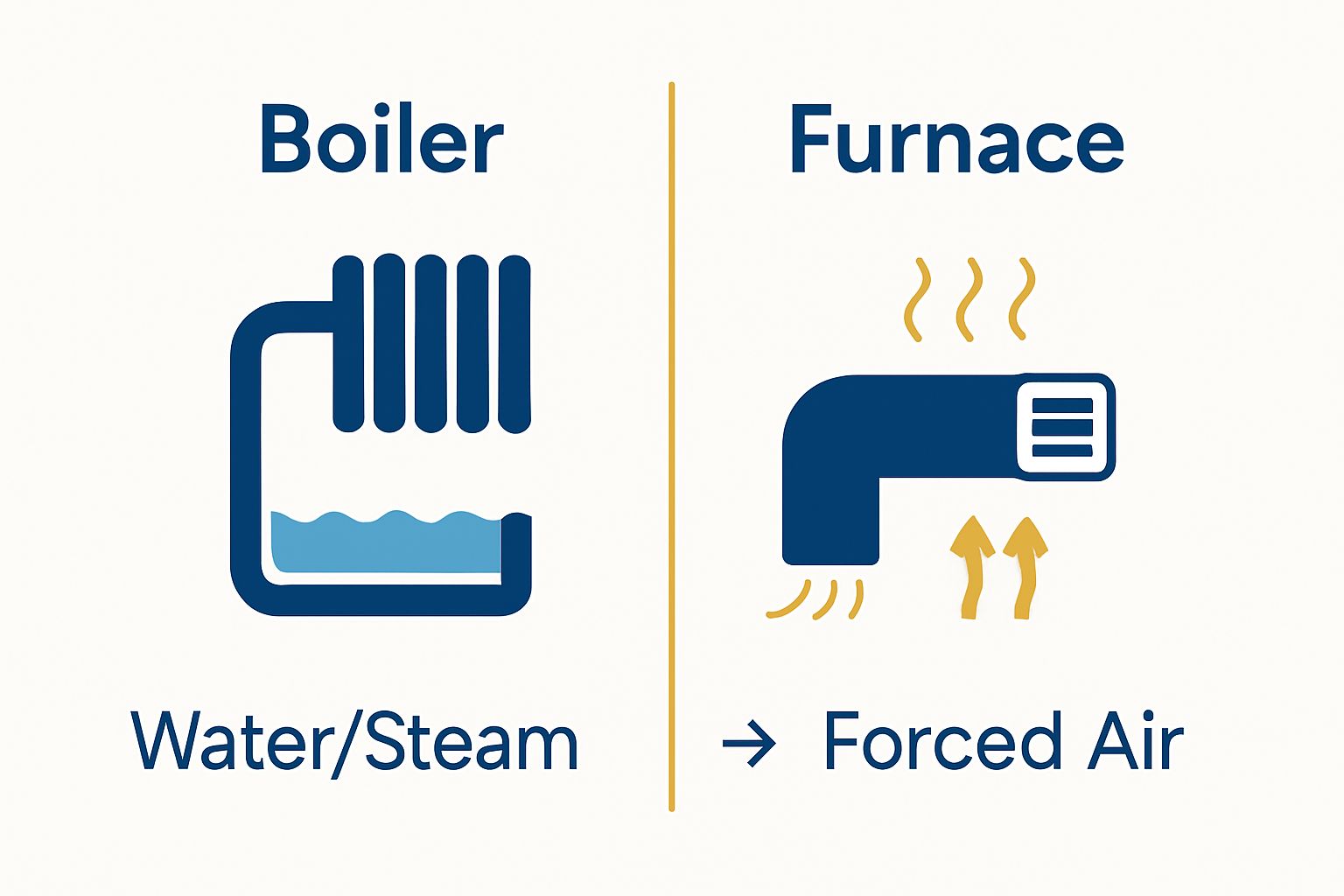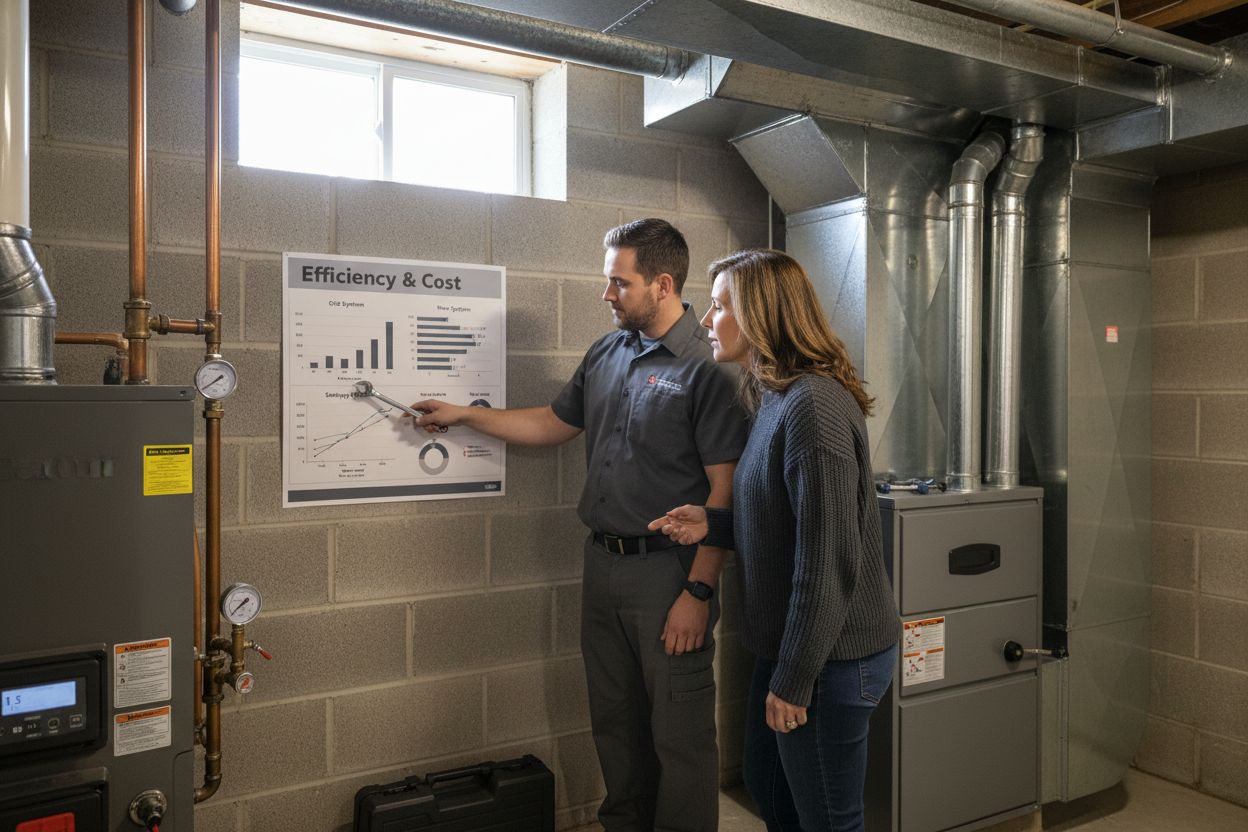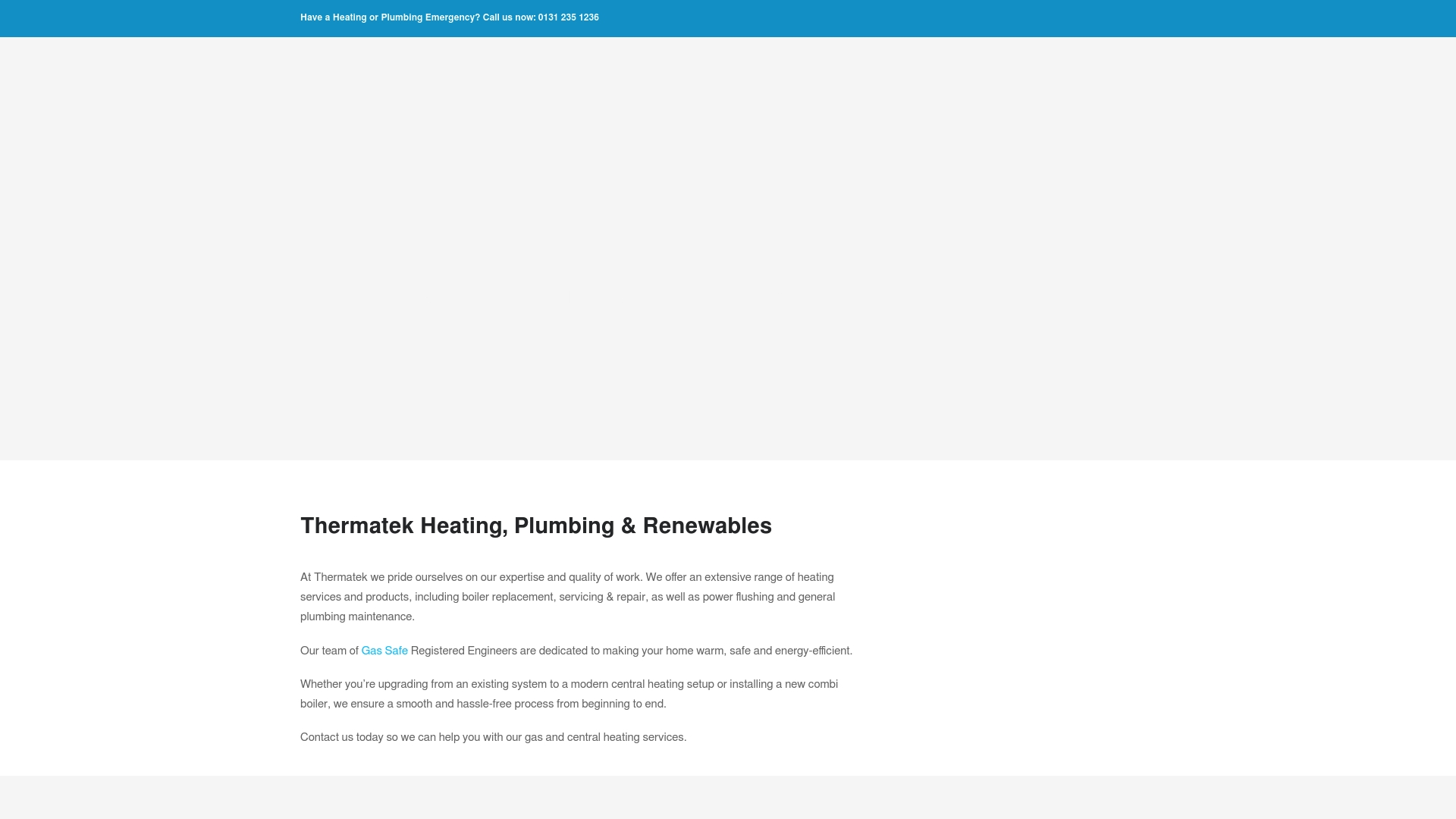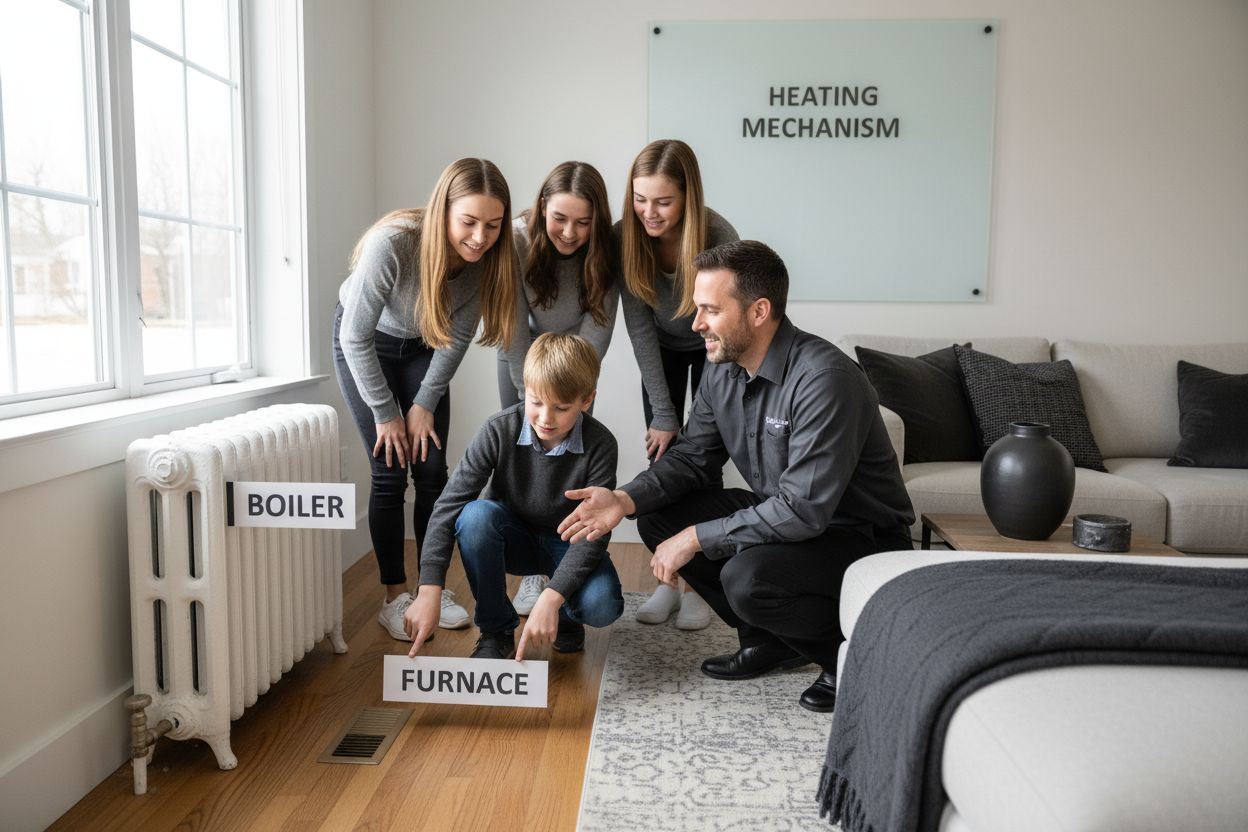Understanding the Difference Between Boiler and Furnace
Boilers and furnaces are at the heart of every heated building, quietly battling cold British winters one degree at a time. Most people do not realise just how massive the difference is between the two. Boilers often deliver more consistent heat by using water that holds warmth far better than air. Yet while everyone talks about upfront costs and energy ratings, the secret lies in how your building was built. An old home with radiators and thick walls could turn a boiler into your best investment, while a modern flat with ducts may make a furnace the real winner.
Table of Contents
- What Are Boilers And Furnaces?
- Why It’s Important To Know The Difference
- How Boilers And Furnaces Generate Heat
- Key Features And Components Of Each System
- Choosing The Right Heating Solution For Your Needs
Quick Summary
| Takeaway | Explanation |
|---|---|
| Choose boilers for efficient heat distribution | Boilers offer consistent heating by using water, leading to lower energy consumption and stable temperatures. |
| Furnaces have lower installation costs | Furnaces are generally cheaper to install but may incur higher operational expenses over time. |
| Assess building infrastructure before choosing | Evaluate existing ductwork or piping to identify which heating system is more compatible with your property. |
| Consider long-term maintenance needs | Different systems require unique servicing approaches, which can affect overall costs and convenience. |
| Energy efficiency is key to cost savings | Opting for the right system influences energy bills significantly, impacting both immediate and long-term costs. |
What are Boilers and Furnaces?
Boilers and furnaces represent two fundamental heating systems used in residential and commercial buildings to generate and distribute warmth. While they share the primary goal of heating indoor spaces, these systems operate through distinctly different mechanisms. Understanding how heating systems work is crucial for homeowners seeking efficient temperature control.
Basic Heating Mechanism
A boiler is a heating system that uses water or steam to transfer heat throughout a building. It generates warmth by heating water in a central tank, then circulates this heated water through pipes connected to radiators, underfloor heating systems, or baseboard heaters. The water absorbs heat from a fuel source like natural gas, oil, or electricity and transfers that thermal energy directly into living spaces.
Key Operational Differences
In contrast, a furnace operates by heating air directly. Unlike boilers that use water as a heat transfer medium, furnaces warm air using a heat exchanger and then distribute this heated air through a network of ducts and vents. Furnaces typically run on natural gas, propane, oil, or electricity, with a blower fan pushing the warmed air into different rooms.
The primary distinctions between boilers and furnaces include:
- Heat Distribution: Boilers use water or steam, furnaces use forced air
- Installation Requirements: Different piping and ductwork configurations
- Heating Efficiency: Varies based on system design, fuel type, and maintenance

If you want to learn more about boiler heating systems, our comprehensive guide provides deeper insights into these complex heating technologies.
Why It’s Important to Know the Difference
Understanding the nuanced differences between boilers and furnaces is crucial for homeowners, property managers, and heating system professionals. Research from the National Renewable Energy Laboratory indicates that selecting the right heating system can significantly impact energy efficiency, installation costs, and long-term maintenance expenses.
Energy Efficiency Considerations
The choice between a boiler and a furnace directly influences your home’s energy consumption and thermal comfort. Boilers typically offer more consistent heat distribution, as water retains thermal energy more effectively than air. This means radiant heating systems can maintain more stable temperatures with potentially lower energy expenditure.
Furnaces, while efficient in their own right, may experience greater heat loss through ductwork and experience more temperature fluctuations during operation.
Financial and Installation Implications
Deciding between a boiler and furnace involves understanding substantial financial considerations. Installation costs vary significantly based on your existing infrastructure, with furnaces generally being less expensive to install but potentially higher in long-term operational expenses. Boilers require specialized piping systems and may involve more complex initial setup, but they often provide more uniform heating and can be more energy-efficient in certain building configurations.
The following table compares boilers and furnaces across core characteristics, providing a clear side-by-side overview for readers considering which heating system best suits their needs.
| Feature | Boiler | Furnace |
|---|---|---|
| Primary Heating Medium | Water or steam | Air |
| Distribution Mechanism | Pipes and radiators/underfloor/baseboard heaters | Ducts and vents |
| Typical Fuel Types | Natural gas, oil, electricity | Natural gas, oil, propane, electricity |
| Heat Consistency | More consistent, stable temperatures | Can have temperature fluctuations |
| Installation Complexity | Higher (specialised piping required) | Lower (uses existing/new ductwork) |
| Initial Installation Cost | Generally higher | Generally lower |
| Maintenance Needs | Specialist servicing required | Regular filter changes and servicing needed |
| Energy Efficiency Potential | Often higher (especially with condensing models) | Variable, can be lower due to duct losses |
Key factors to consider when comparing heating systems include:
- Initial Installation Cost: Furnaces typically have lower upfront expenses
- Energy Efficiency Ratings: Boilers often provide more consistent heat distribution
- Maintenance Requirements: Different systems demand unique servicing approaches
- Building Infrastructure: Existing ductwork or piping systems influence optimal choice
If you want to explore building regulations related to heating systems, our comprehensive guide offers detailed insights into making informed heating decisions for your property.
How Boilers and Furnaces Generate Heat
Heating systems transform energy into thermal warmth through complex yet distinct processes that determine their efficiency and performance. According to the Energy Saving Trust, understanding these mechanisms is crucial for homeowners seeking optimal temperature control and energy management.
Boiler Heat Generation Process
Boilers generate heat by burning fuel to warm water or create steam, which then circulates through a building’s heating infrastructure. The process begins when a fuel source such as natural gas, oil, or electricity heats water in a central tank. This heated water transfers thermal energy through pipes connected to radiators, underfloor heating systems, or baseboard heaters. Condensing boilers represent a more advanced technology, capturing additional heat from exhaust gases to improve overall system efficiency.
Furnace Heat Generation Mechanism
Furnaces operate differently by directly heating air using a heat exchanger. When the system activates, fuel burns in a combustion chamber, warming metal heat exchanger surfaces. A powerful blower fan then pushes this heated air through a network of ducts, distributing warmth throughout different rooms. The heat transfer process in furnaces is more immediate compared to boilers, with air being the primary medium for thermal distribution.
Key components involved in heat generation include:
- Fuel Source: Natural gas, oil, electricity, or propane
- Heat Exchanger: Converts fuel energy into thermal warmth
- Distribution Mechanism: Pipes for boilers, ducts for furnaces
- Control Systems: Thermostats and temperature regulators
Learn more about how boilers work in our detailed heating guide, which provides comprehensive insights into these essential home heating technologies.
Key Features and Components of Each System
According to the Health and Safety Executive, understanding the specific components of heating systems is crucial for proper maintenance and efficient operation. Each system possesses unique structural elements that define its functionality and performance characteristics.
Boiler System Components
Boilers represent complex heating systems with multiple intricate components. The primary elements include a combustion chamber where fuel burns, a heat exchanger that transfers thermal energy to water, and a circulating pump that moves heated water through pipes. Condensing boilers feature additional heat recovery mechanisms, capturing waste heat from exhaust gases to improve overall energy efficiency. Expansion tanks manage water volume changes, pressure relief valves ensure safe operation, and control systems like thermostats regulate temperature precisely.
Furnace System Architecture
Furnace systems differ significantly in their structural design. The core components include a heat exchanger which warms air directly, a blower motor that pushes heated air through ductwork, and an air filter that removes particulates. The combustion chamber burns fuel to generate initial heat, while electronic ignition systems provide reliable startup mechanisms. Modern furnaces incorporate advanced features like variable-speed blowers that adjust airflow for optimal comfort and energy consumption.
Critical components shared by both heating systems include:
This table outlines the principal system components found in both boilers and furnaces, highlighting their roles as discussed in the article.
| Component | Boiler System Function | Furnace System Function |
|---|---|---|
| Combustion Chamber | Burns fuel to heat water/produce steam | Burns fuel to generate heat for exchanger |
| Heat Exchanger | Transfers heat to water/steam | Warms air directly |
| Circulating Pump/Blower | Pumps water/steam through system | Blows heated air through ductwork |
| Distribution Infrastructure | Pipes/radiators/underfloor/baseboard heaters | Ducts and vents |
| Control System | Regulates temperature and flow (thermostats) | Regulates temperature and airflow (thermostats) |
| Safety Mechanisms | Pressure relief valves, expansion tanks | Automatic shutdowns, air filters |
- Fuel Input Mechanism: Controls fuel delivery and combustion
- Temperature Regulation: Thermostats and control boards
- Safety Features: Pressure relief and automatic shutdown systems
- Heat Transfer Elements: Specialized surfaces for thermal energy conversion
Explore our comprehensive guide on condensing boiler technology to understand the latest advances in heating system design and efficiency.
Choosing the Right Heating Solution for Your Needs
According to the Energy Saving Trust, selecting an appropriate heating system requires careful consideration of multiple factors beyond initial purchase price. Homeowners must evaluate their specific requirements to ensure optimal thermal comfort and energy efficiency.
Property-Specific Considerations
Building characteristics play a critical role in determining the most suitable heating system. Older properties with existing radiator infrastructure might benefit more from boiler installations, while newer constructions with comprehensive ductwork could be better suited to furnace systems. Factors such as insulation quality, room layout, ceiling height, and overall square footage significantly influence heating performance and energy consumption.
Economic and Performance Factors
Economic considerations extend beyond the initial installation cost. Long-term operational expenses, maintenance requirements, and energy efficiency ratings become paramount. Boilers typically offer more consistent heat distribution and potentially lower running costs in well-insulated properties, whereas furnaces might provide more affordable initial installation and faster heat generation. The local fuel infrastructure availability also impacts the most cost-effective solution, with natural gas, electricity, and alternative fuel options presenting different economic implications.

Key evaluation criteria for selecting your ideal heating system include:
- Existing Home Infrastructure: Compatibility with current piping or ductwork
- Climate Conditions: Heating requirements based on regional temperature variations
- Energy Efficiency Ratings: Long-term operational cost projections
- Maintenance Complexity: Anticipated servicing and repair expenses
Discover which heating system best suits your property, with our comprehensive guide designed to simplify your decision-making process.
Take the Uncertainty Out of Choosing Your Perfect Heating Solution
Are you feeling confused about the best way to heat your home after learning the differences between boilers and furnaces? Many Edinburgh property owners find themselves concerned about energy efficiency, future maintenance, and the long-term costs of heating their spaces. The pressure to make a cost-effective and reliable choice can feel overwhelming, especially when words like “condensing boiler,” “radiant heat,” and “forced air” start to blur together. You deserve clear answers and a solution designed for your needs.

Let Thermatek’s trusted heating experts guide you. Our team specialises in professional boiler replacements, repairs, and servicing, as well as advanced renewable energy upgrades for homes throughout Edinburgh and Midlothian. Every installation is handled by Gas Safe Registered engineers to ensure safety and full regulatory compliance. Why wait until a cold snap leaves you uncomfortable or facing higher bills? Request your free quote today and let us take the guesswork out of creating an energy-efficient home. Ready to discover which system matches your property? Learn more with Thermatek now.
Frequently Asked Questions
What is the main difference between a boiler and a furnace?
Boilers use water or steam to transfer heat, whereas furnaces heat air directly. This fundamental difference affects how each system distributes warmth throughout a building.
How do boilers and furnaces generate heat?
Boilers generate heat by burning fuel to warm water or create steam, which circulates through pipes. Furnaces heat air directly using a heat exchanger, with a blower fan distributing the heated air through ducts.
Which heating system is more energy-efficient?
Boilers are generally considered more energy-efficient than furnaces, as water retains heat better than air, leading to more consistent temperatures and potentially lower energy costs over time.
What factors should I consider when choosing between a boiler and a furnace?
Consider your property’s existing infrastructure, energy efficiency ratings, installation costs, maintenance requirements, and the climate conditions in your area when deciding between a boiler and a furnace.

